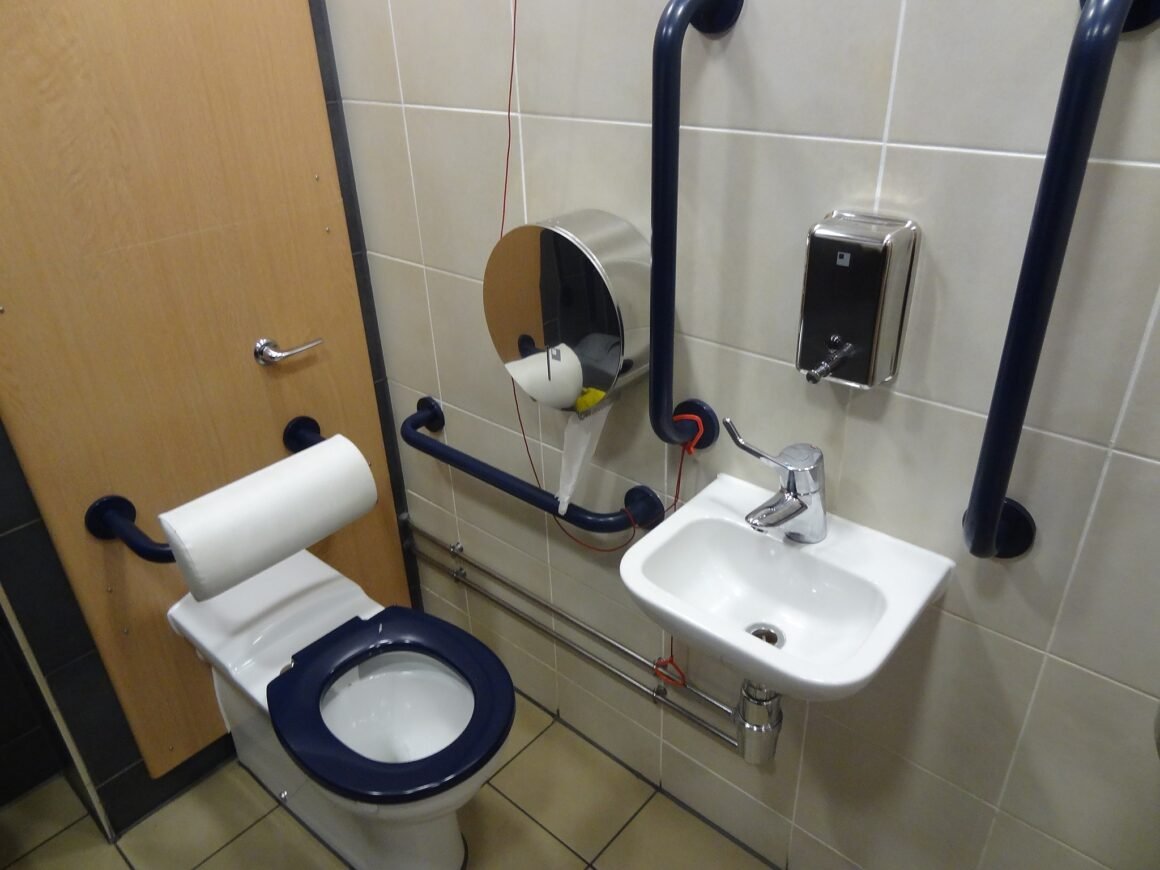Table of Contents Show
ADA toilet grab bars in themselves are essential tools in aiding and supporting disabled persons.
But it is equally essential that proper care and maintenance are given to them to ensure grab bar durability and shelf life, optimal utilization, the safety of said persons.

How to Maintain ADA Bars?
1. Understanding Stainless Steel
Most grab bars are made of stainless steel. Stainless steel is most notable for its durability, resilience against wear and tear, invulnerability to brittleness, corrosion, and rust.
Characteristics that are valuable, especially in the context of disability aids.
So, this is where we draw the starting line. Despite stainless steel having these incredible features, it’s crucial to know how to care for stainless steel-ADA bars the right way.
2. Water, Soap & Water, Or Glass-Safe Cleaners
Ironically, the durability of stainless steel does not make them impervious to strong detergents, bleaches, and mineral acids.
There are such products that are manufactured with certain levels of ammonia and/or chlorine. Two variables that cause corrosion in stainless steel.
Therefore, it’s best to stick to the basics— washing grab bars with undiluted H2O, or a simple soap + water mixture.
These, together with glass-safe cleaners will bring back the bars’ brilliant shine without affecting their structural integrity.
Don’t rely on the fact that your grab bars are in the shower cubicle, or are installed very close to the bathtub or sink so that splashes from these devices may “rinse” them off.
Wash them on a separate occasion.
Read Also:
3. Discoloration & Rust
Although stainless steel is tough against rusting, metallic compounds added to it may cause the handlebars to succumb to it.
But worry not because there is a solution to ridding ADA bars of rust and getting back their chrome-like finish.
One, a DIY-baking soda solution (1-part baking soda, 2 parts water) will do the trick. Two, there are rust removal products you can purchase.
It’s always safest to ask the grab bar supplier/ manufacturer about said products, to know if they are too harsh on the material of the railing.
Follow this procedure with discolouration as well.
Another tip: Do not use abrasive wiping and/or washing fabric. Steel scrubs are not necessary for toilet grab bars. Their coarse consistency may gash and/or scratch the handle surface.
4. Drying Solution
It’s a must that you wipe grab bars dry, along with the wall they are affixed on. Water droplets that aren’t wiped off will turn into water stains.
They may not be directly dangerous. Yet they are unpleasant to the eyes and are telling of poor hygienic and sanitation practices.
Indirectly, damp areas can become breeding grounds for moulds. And moulds may produce allergens and irritants that can fill the air space in your bathroom.
Beyond this, moulds have a slippery texture that when they envelop grab bars, are likely to cause accidents.
5. Wiper-Cloth Care
Shop oil, grease, and grit might not be strong contenders in the reverse-passivation (becoming more susceptible to external elements that cause corrosion and deterioration) of stainless steel.
However, they will cause grab bars to be difficult to grip.
As a precaution, have a separate wiper cloth or fabric for grab bar cleaning, and do not use it for any other purpose.
In this manner, you will be eliminating the likelihood of contaminating it with grease-like substances that may adhere to the bar’s surface.
In any case, non-halogenated solvents can remove oil and grease from your grab bar wiping cloths.










